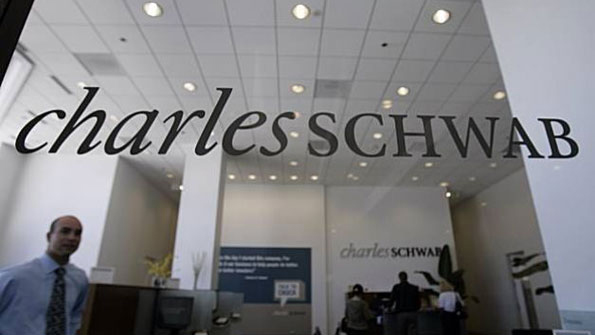
[ad_1]
(Bloomberg) — A bond ETF with no meaningful flows since it was launched more than three years ago just got an injection of nearly $2 billion.
Assets in Schwab 5-10 Year Corporate Bond ETF (ticker SCHI) swelled to a record $2.33 billion on Monday from around $356 million previously. The fund, a product of the financial company Charles Schwab Corp., tracks the total return of an index following the performance of intermediate-term US corporate bonds.
Such a large flow is usually either the hallmark of a tax-friendly trade known as a heartbeat — in which case outflows can be expected in coming days — or of moves by a large model portfolio. Such a portfolio shift was suspected earlier this month, when roughly $4 billion was pulled from BlackRock Inc.’s iShares ESG Aware MSCI USA ETF (ESGU).
“We periodically review and update the asset allocations and ETF selections across our packaged solutions,” a representative from Schwab’s asset management unit said in response to a query on the sudden inflow.
Money has been cycling out of ETFs tied to shorter term bonds this month. ETFs tracking bonds of a one- to three-year duration saw $3 billion of outflows in March, while those tracking three- to 10-year bonds had inflows of $5.6 billion, according to Bloomberg Intelligence’s Athanasios Psarofagis.
“People are rotating out a bit more on the curve hoping for a Fed pivot,” he said.
Sextupling assets overnight is impressive in any case, especially as the influx of cash comes at a time of instability for the Schwab empire. The Westlake, Texas-based firm saw unrealized losses grow to more than $29 billion last year as long-dated bonds weighed on its balance sheet. High interest rates have pressured customers to cycle their cash out of the firm’s accounts.
Through Tuesday’s close, the Schwab ETF has returned roughly 3.2% this year, outperforming many similar ETFs tracking investment-grade bonds where the average return was about 2.3%, according to data compiled by Bloomberg.
More than 90% of the fund’s holdings relate to companies in the industrials and financials sectors, including names like Goldman Sachs Group Inc., PG&E Corp., and Wells Fargo & Co.
Companies with bottom-tier (BBB) investment-grade ratings make up the majority of the portfolio. Nearly all of the bonds expire within five to ten years. Last week, companies with investment-grade credit ratings rushed to market as the spread between junk and high-grade bonds expanded to a five-month high.
Todd Sohn, an ETF strategist at Strategas Securities, expects the SCHI investor found the risk profile of intermediate corporate bonds appealing, especially given the “very messy tape” in the equities market.
“The ETF route is always easier, cleaner,” said Sohn. “It can be hard to dissect corporate bonds – some don’t trade, or you may end up selecting the wrong individual bonds. With the ETF, you are getting broad, transparent exposure. It’s just far cleaner and more accessible to the average investor.”
–With assistance from Sam Potter.
[ad_2]






